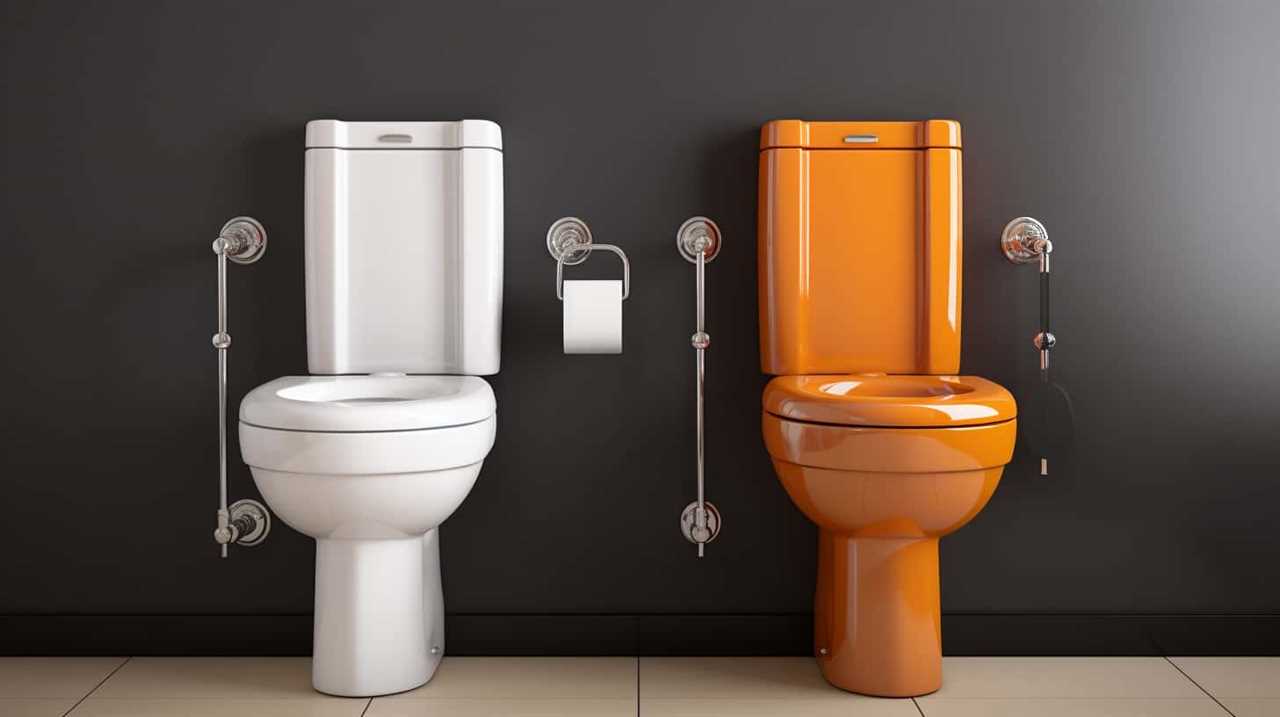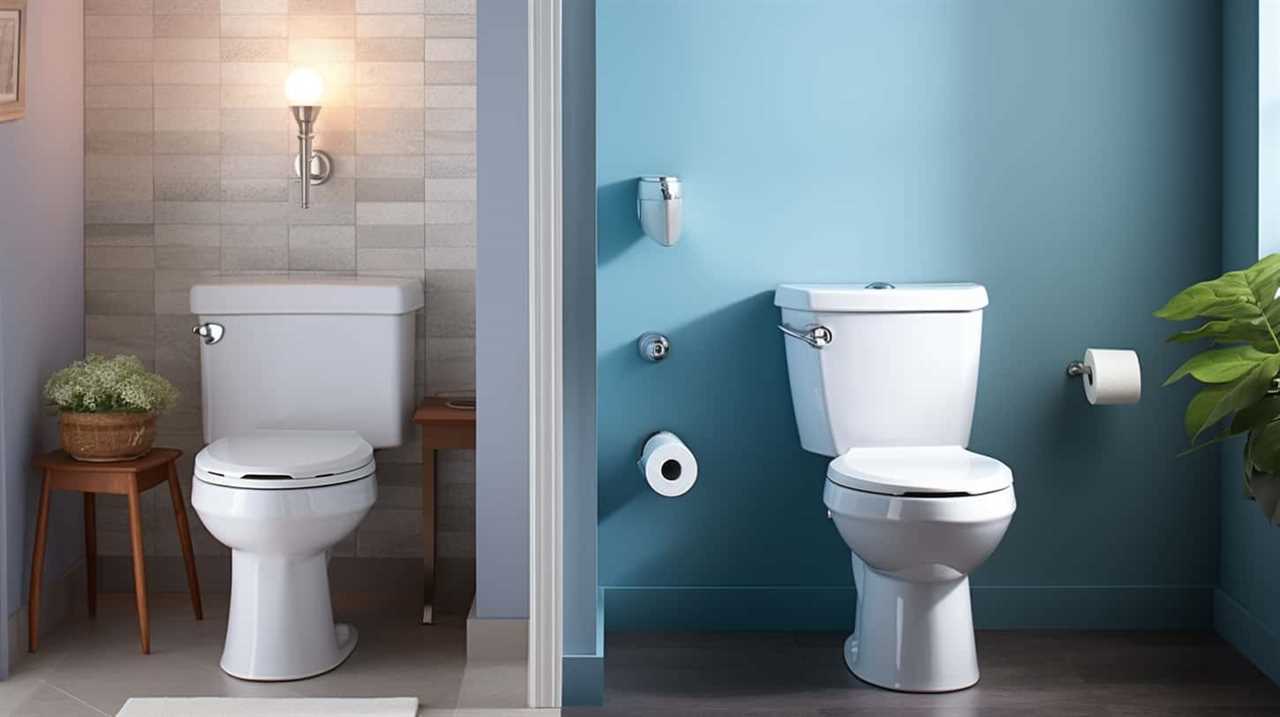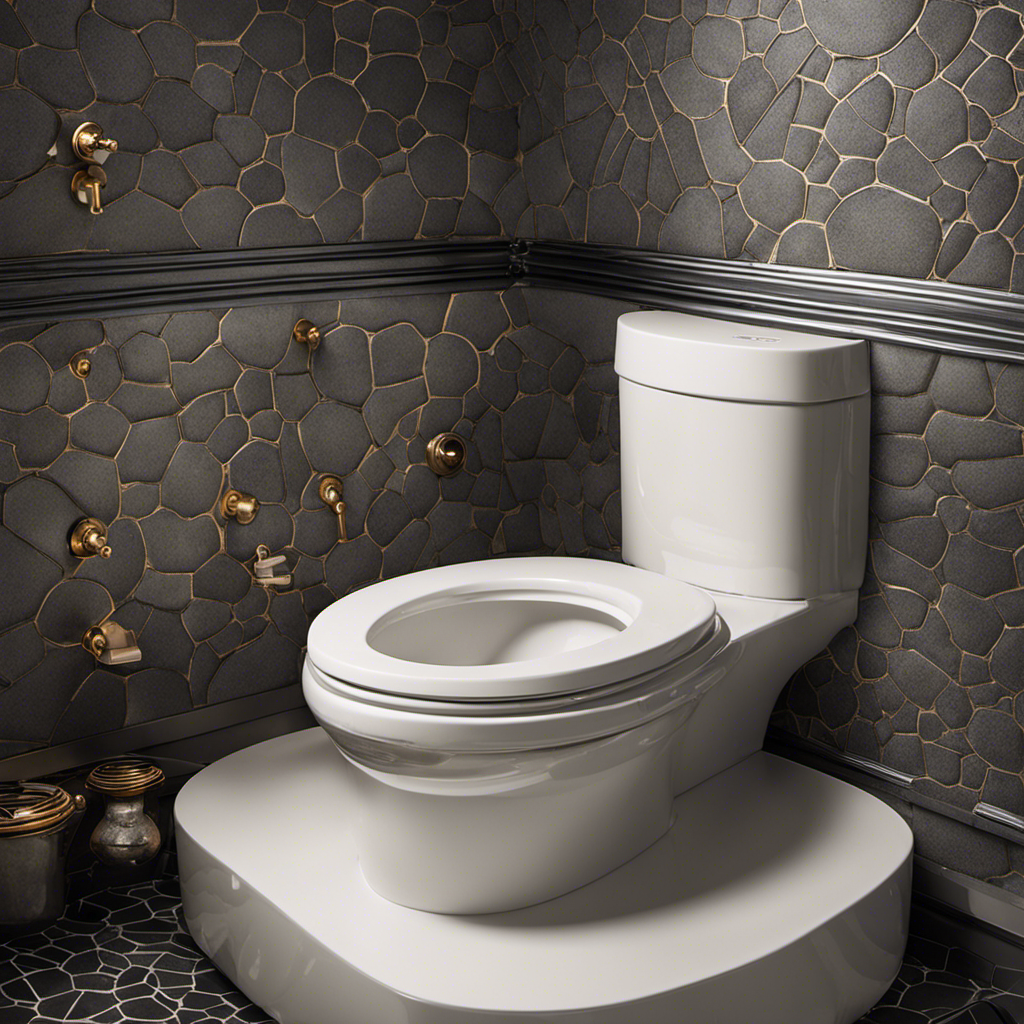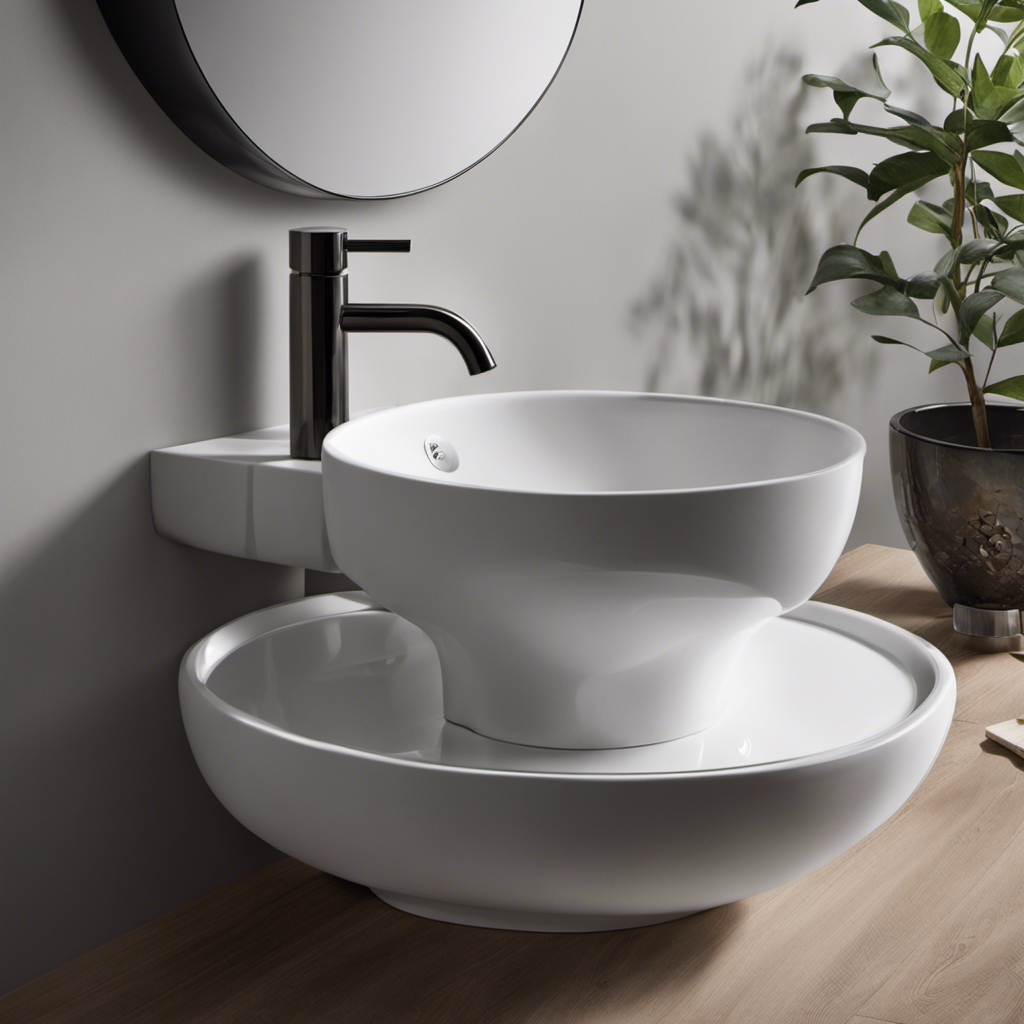Imagine a frustrating scenario: the toilet handle refuses to cooperate. Fear not, for we are here to guide you through this ordeal.
In this concise and informative article, we will reveal the secrets of flushing a toilet when the handle malfunctions. With a technical approach and a touch of mastery, we will explore various solutions, from checking the handle connection to employing a plunger.
Prepare to conquer this challenge and regain control over your throne.
Key Takeaways
- Inspect the toilet handle and flush mechanism for any loose or disconnected parts.
- Use a makeshift handle, such as a wire hanger or wooden stick, to activate the flushing mechanism.
- Utilize a bucket of water to create a siphon effect and flush the toilet temporarily.
- If all else fails, contact a professional plumber for proper repairs and replacements.
Check the Handle Connection
To start troubleshooting a toilet with a non-working handle, we begin by checking the connection between the handle and the flushing mechanism. The first step is to inspect the toilet tank and locate the handle assembly. This may require removing the tank lid, so be sure to handle it carefully.

Once the handle assembly is visible, visually inspect the connection between the handle and the flush mechanism. Look for any loose or disconnected parts. If the handle appears to be intact, try pressing or pulling on it to see if it engages the flush mechanism. If the handle feels loose or doesn’t activate the flush, it may need to be tightened or replaced.
Troubleshooting the flush mechanism will be discussed in the next subtopic. Remember to turn off the water supply before attempting any repairs.
Use a Makeshift Handle
One possible solution is to create a makeshift handle using a few household items. In an emergency toilet repair situation where the handle doesn’t work, a DIY toilet handle fix can be done using the following steps:
- Find a sturdy object, such as a wire hanger or a wooden stick, that can be used as a replacement handle.
- Remove the lid of the toilet tank to access the inside mechanism.
- Locate the chain or rod that’s connected to the flapper valve or flush valve.
- Attach the makeshift handle to the chain or rod, ensuring a secure connection.
- Test the makeshift handle by pulling or pushing it to activate the flushing mechanism.
Using this temporary fix, you can successfully flush the toilet until a proper handle replacement is obtained. Remember to exercise caution and consult a professional for a permanent solution.

Use a Bucket of Water
If the makeshift handle method doesn’t work, we can use a bucket of water as an alternative way to flush the toilet.
Troubleshooting common toilet handle issues is essential in understanding the mechanics behind toilet flushing mechanisms. When the handle fails to activate the flushing mechanism, it could be due to a loose or broken handle connection, a broken chain, or a faulty flapper valve.
To flush the toilet with a bucket of water, fill a bucket with water and pour it quickly into the toilet bowl. The force of the water will create a siphon effect, causing the waste to be sucked out of the bowl and into the drain. This method can provide a temporary solution until the handle is repaired or replaced.
Now, let’s move on to the next method: trying a plunger.

Try a Plunger
Using a plunger is an effective method to flush a toilet when the handle doesn’t work. Plungers are simple tools that create pressure and suction to clear clogs and move water through the toilet bowl. Here are some troubleshooting techniques and alternative solutions to try before calling a professional plumber:
- Ensure the plunger is clean and free from debris.
- Position the plunger over the drain hole, creating a seal.
- Push down firmly and then pull up quickly, repeating the motion several times.
By creating pressure and suction, the plunger can dislodge any blockages and allow the water to flow freely, flushing the toilet.
If all else fails, it may be time to call a professional plumber who can diagnose and fix the underlying issue.
Call a Professional Plumber if All Else Fails
When all else fails, we should contact a professional plumber to address the issue of a non-functioning toilet handle. While troubleshooting common toilet flushing issues and attempting DIY toilet handle repairs and replacements can be effective in some cases, there are instances where the expertise of a professional is required. A professional plumber has the knowledge and experience to accurately diagnose the problem and provide the most appropriate solution. They can also ensure that any repairs or replacements are done correctly, minimizing the risk of further damage or recurring issues. Calling a professional plumber not only saves time and effort but also guarantees a long-term and reliable fix for the non-functioning toilet handle.

| Advantages of Calling a Professional Plumber | Disadvantages of Calling a Professional Plumber |
|---|---|
| Expertise in diagnosing toilet handle issues | Cost of professional services |
| Proper repairs and replacements | Potential wait time for an appointment |
| Long-term and reliable fix | Inconvenience during the repair process |
Frequently Asked Questions
How Do I Fix a Loose Toilet Handle?
To fix a loose toilet handle, first locate the mounting screws underneath the tank lid. Use a screwdriver to tighten them, ensuring the handle is secure. If the handle still doesn’t work, troubleshoot common toilet handle issues.
Can I Use Any Object as a Makeshift Handle?
When the toilet handle malfunctions, we can explore makeshift handle alternatives. Troubleshooting toilet handle issues requires resourcefulness and caution. Let’s consider practical objects that can be used as temporary replacements to flush the toilet.
What Should I Do if the Toilet Is Overflowing?
To prevent toilet overflow, alternative methods can be used if the handle doesn’t work. First, locate the water shut-off valve near the base of the toilet and turn it off. Then, use a plunger or a bucket of water to manually flush the toilet.
Can I Use a Plunger if the Water Level Is Very Low?
When the handle won’t work, we can troubleshoot low water levels by using plunger alternatives. One option is to pour a bucket of water into the bowl, creating enough pressure to flush the toilet.

How Much Does It Usually Cost to Hire a Professional Plumber for This Issue?
Toilet handle not working? Call a professional plumber for an accurate cost estimate. Alternatively, try DIY solutions like adjusting the chain or replacing the handle. Remember to turn off the water supply first.
Conclusion
In conclusion, when faced with a non-functioning toilet handle, there are several options to consider.
First, check the handle connection to ensure it’s properly secured.
If that doesn’t work, you can try using a makeshift handle or a bucket of water to manually flush the toilet.

If all else fails, a plunger might do the trick.
However, if none of these methods work, it’s advisable to call a professional plumber for assistance.
Remember, troubleshooting the issue with the handle connection is often the key to resolving the problem efficiently and effectively.










